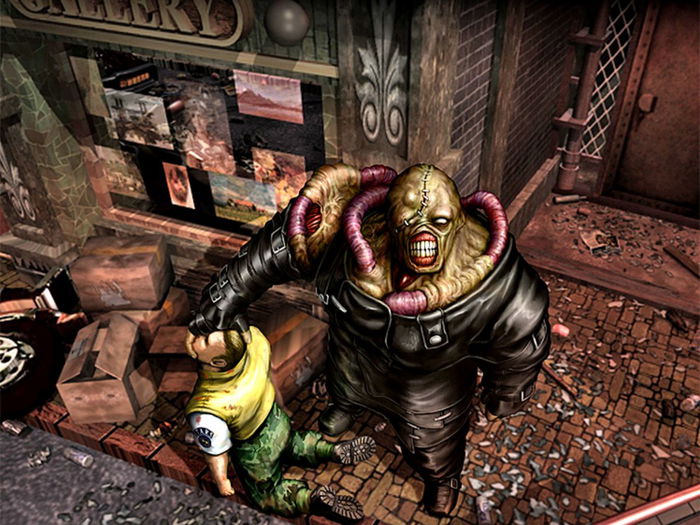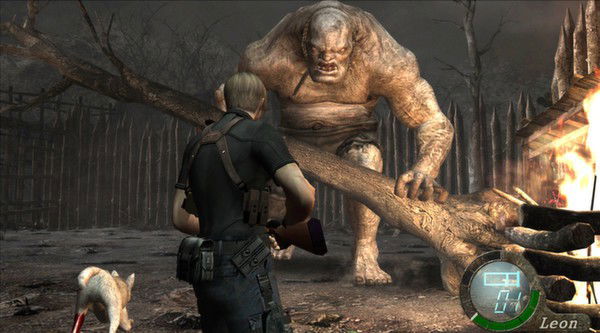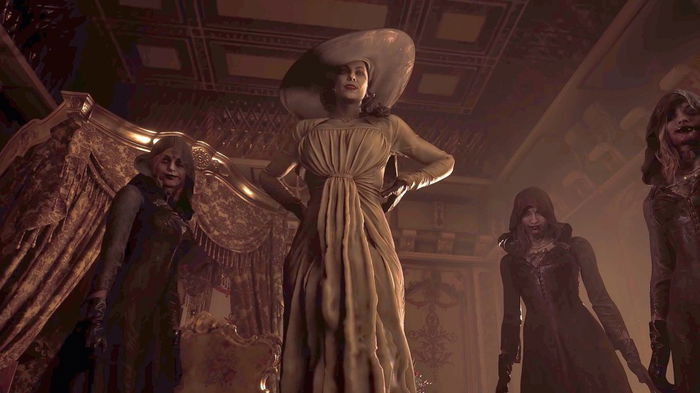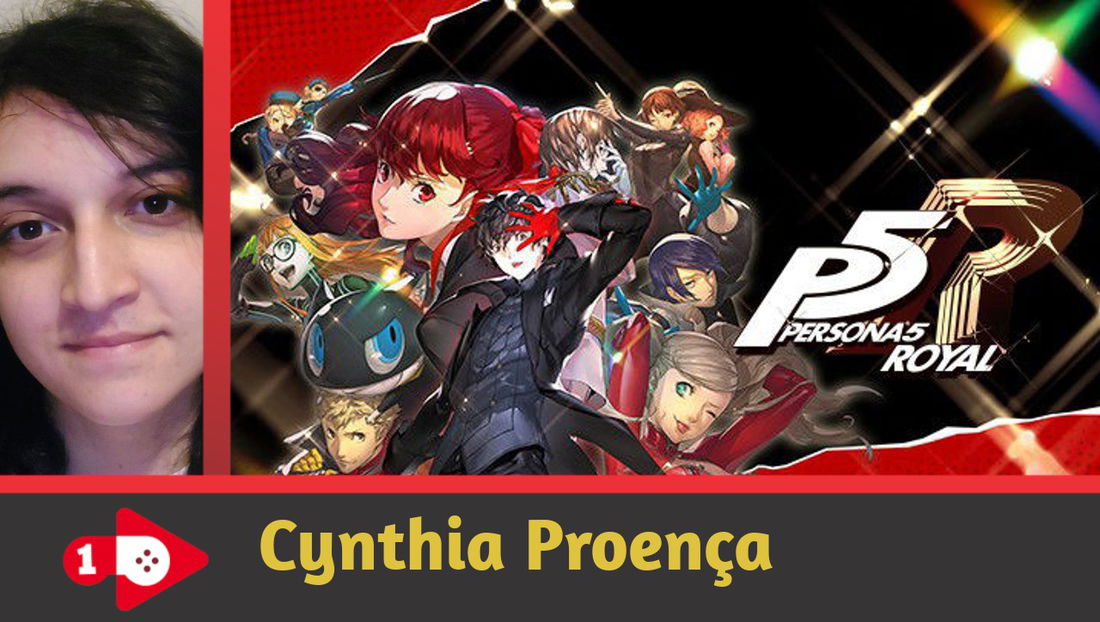From the Spencer Mansion to the Future of Humanity
The Resident Evil franchise is a milestone in the world of video games. Created by Capcom in 1996, the series popularized the survival horror genre and built a universe full of conspiracies, biological experiments, and memorable characters. What began as a survival story in an isolated mansion has expanded into a global plot involving viruses, parasites, and increasingly complex biological weapons.
In this article, we'll walk through the mainline game-by-game, exploring the saga's complete history and how each chapter connects to form one of the richest and most enduring universes in the gaming industry.
Resident Evil (1996) – The Beginning at Spencer Mansion
Released in 1996, Resident Evil defined the concept of survival horror and introduced iconic characters that would accompany the franchise for decades. The story takes place in July 1998, when strange cannibalistic murders begin occurring in the Arklay Mountains, near Raccoon City. The special squad S.T.A.R.S. sends Bravo Team to investigate, but they mysteriously disappear. Shortly after, Alpha Team, consisting of Chris Redfield, Jill Valentine, Barry Burton, and Albert Wesker, is sent to rescue them.
Upon arrival, they’re attacked by infected dogs and find refuge in a seemingly abandoned mansion. However, the place soon reveals itself to be a laboratory of the Umbrella Corporation, responsible for illegal research into the T-Virus. Mutant creatures, zombies, and failed experiments lurk in the corridors, and the protagonists must solve puzzles and survive the terror.
During the investigation, the heroes discover that Wesker, the team's captain, is a traitor undercover at the behest of Umbrella, and that the entire mansion is a front for biological experiments. The game culminates in a confrontation with the Tyrant, one of the most advanced biological weapons of the time. The survivors managed to escape in a helicopter, but disaster had already been unleashed.
Resident Evil 1 not only launched one of the biggest franchises in gaming, it also established its central themes: horror, an atmosphere of corporate conspiracy, and the desperate struggle of ordinary people against biological weapons created by human greed.
Resident Evil 2 (1998) – Hell in Raccoon City
Two months after the Spencer Mansion, in September 1998, chaos takes over Raccoon City. Umbrella has failed to contain the outbreak of the T-Virus, and the entire city is plunged into terror. In this scenario, two new protagonists enter the scene: Leon S. Kennedy, a rookie police officer on his first day on the job, and Claire Redfield, sister of Chris, who is missing.
The game features two interconnected campaigns. Leon ends up meeting Ada Wong, a mysterious spy searching for the G-Virus, while Claire meets Sherry Birkin, daughter of scientist William Birkin, creator of this new viral mutation. When Umbrella attempts to forcibly take the G-Virus, William injects himself with his own creation and transforms into a grotesque creature that stalks them throughout the adventure.
The narrative unfolds amidst dark police station corridors, underground laboratories, and encounters with iconic monsters such as Mr. X (Tyrant). The constant persecution heightens the tension, and the protagonists' partnership with their allies highlights the contrast between innocence and betrayal.
In the end, Leon and Claire manage to escape the city alongside Sherry, but Umbrella remains powerful. Ada, presumed dead, leaves doubts about its true intentions.
Resident Evil 2 expanded the universe, showed that tragedy wasn't limited to an isolated mansion, and introduced characters who would become key players in the franchise's mythology. Its impact was so great that it’s remembered as one of the best chapters in the saga.
Resident Evil 3: Nemesis (1999) – The Escape from Raccoon City
While the events of Resident Evil 2 unfold, the other side of the nightmare unfolds in Raccoon City. This time, we follow Jill Valentine, a survivor of the Spencer Mansion, trying to escape the city during the viral outbreak. However, she's not only surrounded by zombies and deformed creatures, but also being hunted by the franchise's most iconic biological weapon: the Nemesis-T Type, designed by Umbrella to exterminate S.T.A.R.S. members.
The relentless pursuit of Nemesis creates constant tension, as it appears unexpectedly, armed with tentacles and even rocket launchers. During the escape, Jill receives help from Carlos Oliveira, a mercenary from U.B.C.S., sent by Umbrella with the false mission of rescuing civilians. Carlos, however, proves to be one of the most human figures in the story and ends up becoming essential to Jill's survival.
The narrative depicts the despair of a collapsing city, with civilians dying, buildings burning, and the feeling of no escape. Jill is infected by the T-Virus in one of the encounters with Nemesis, but Carlos manages to save her life with an experimental vaccine. The game culminates in the revelation that the government has decided to eliminate Raccoon City with a nuclear missile to contain the contamination.
In the end, Jill and Carlos manage to escape, but the city's destruction is inevitable. This chapter marks the conclusion of the initial trilogy and symbolizes Umbrella's fall from grace according to the public, even as the corporation continues to attempt to manipulate the facts.

Resident Evil Code: Veronica (2000) – Wesker’s Return
After the destruction of Raccoon City, Umbrella remains active in various parts of the world. Claire Redfield, still searching for her brother Chris, breaks into a corporation laboratory, but is captured and taken to Rockfort Island, a prison controlled by the Ashford family, one of the founders of Umbrella.
On the island, Claire allies herself with Steve Burnside, a young man imprisoned after his own father's betrayal. Together, they try to escape the bizarre experiments taking over the place, including grotesque mutations created by the T-Veronica virus. During the journey, they discover the secrets of the Ashford family, especially the obsession of Alfred Ashford and the triumphant return of his sister Alexia, who becomes one of the most powerful villains in the franchise.
Meanwhile, Albert Wesker, previously thought dead, returns, revealing that he survived the mansion incident and is now working on his own. He emerges with superhuman abilities, the result of experiments on himself, and becomes a recurring villain in the series' background.
The plot gains even more intensity when Chris Redfield arrives to save Claire, facing both Alexia and Wesker in decisive battles. In the end, Claire manages to escape, but Steve dies tragically, marking one of the most emotional moments in the franchise.
Code: Veronica is a turning point because it takes the series beyond Raccoon City, expands the Umbrella universe, and solidifies Wesker as the saga's true antagonist.
Resident Evil Zero (2002) – The Origin of the Nightmare
Released as a prequel, Resident Evil Zero takes place hours before the events at Spencer Mansion and explains how the disaster began. The story follows Rebecca Chambers, the youngest member of the S.T.A.R.S. Bravo team, sent to the Arklay Mountains to investigate strange crimes. Her team suffers a helicopter crash, and Rebecca ends up alone on a mysterious train called the Ecliptic Express, filled with the undead.
There, she meets Billy Coen, an ex-Marine accused of murder. Despite their initial distrust, the two must team up to survive. The gameplay introduces a character swap system, allowing players to alternate between Rebecca and Billy to solve puzzles and face enemies.
The plot reveals the figure of James Marcus, one of the founders of Umbrella and original creator of the T-Virus, who was betrayed and murdered by his own corporation. Before dying, Marcus becomes infected with a new viral form, capable of controlling leeches, and returns for revenge. Rebecca and Billy confront his grotesque mutations and manage to destroy him, but not before Marcus releases the virus that will trigger the mansion incident.
In the end, Rebecca decides to trust Billy and lets him escape, declaring him dead to the authorities, preserving her freedom. Soon after, she heads to the mansion, where she’ll meet Chris and Jill in Resident Evil 1.
This chapter ties up loose ends and shows that the disaster wasn’t an accident, but a direct result of Umbrella's ambitions.
Resident Evil 4 (2005) – A New Threat
Six years after Raccoon City, the franchise takes a radical turn. Resident Evil 4 abandons the classic zombies and introduces a new biological threat: the parasite Las Plagas. The protagonist is Leon S. Kennedy, now a special agent for the US government, sent to Spain to rescue Ashley Graham, the president's daughter kidnapped by a cult called Los Illuminados.
Upon arriving in the village, Leon discovers that the inhabitants have been infected by the Plagas, losing their humanity but retaining a certain intelligence and capacity for cooperation, making them far more dangerous adversaries than ordinary zombies. During the mission, he encounters Luis Sera, a former researcher, and reunites with Ada Wong, whose loyalties remain ambiguous.
The cult leader, Osmund Saddler, plans to use the Plaga to control Ashley and thus dominate world political leaders. Leon faces a number of memorable villains, including Ramon Salazar, a deformed feudal lord, and monsters resulting from grotesque parasitic experiments.
During the journey, Leon becomes infected but manages to rid himself of the Plaga thanks to a machine created by Luis, who sacrifices his life for the mission. Ada reappears to help him at crucial moments, but at the same time, she delivers a sample of the Plague to Wesker, connecting the plot to the villain who continues to act behind the scenes.
Resident Evil 4 is considered a watershed moment: it revolutionized the action genre and influenced dozens of subsequent games, while maintaining the suspenseful atmosphere and elevating Leon to the status of a definitive icon of the franchise.

Resident Evil 5 (2009) – The Final Confrontation with Wesker
In 2009, the saga takes its heroes to Africa, the birthplace of biological weapons experiments. Chris Redfield, now a member of the BSAA, travels to the fictional country of Kijuju with his partner Sheva Alomar to investigate biological weapons trafficking. They soon discover that the local population has been infected by a version of Las Plagas, called Uroboros, linked to old Umbrella experiments.
During the mission, Chris meets Jill Valentine again, previously thought to be dead, but now mind-controlled by Wesker. This reunion generates one of the saga's most dramatic moments, as Chris must battle his former partner. After freeing her, he remains determined to end the villain's threat once and for all.
Wesker, revealed as the true mastermind behind several conspiracies, plans to use Uroboros to eliminate most of humanity, leaving only a "superior" race. Thanks to the powers gained in Code: Veronica, he became nearly invincible, with superhuman strength and reflexes.
The narrative culminates in an epic showdown in an erupting volcano, where Chris and Sheva face Wesker in his monstrous form. With Jill's help and coordinated attacks, they finally defeat him, bringing an arc that began in the first game to a close.
Resident Evil 5 is remembered for its cooperative action and for bringing the Umbrella/Wesker era to a close, cementing the franchise's transition to global threats.
Resident Evil 6 (2012) – Worldwide Chaos
Resident Evil 6 is the point at which the saga reaches global proportions. The game features four interconnected campaigns, featuring biological outbreaks in different parts of the world and classic characters dealing with the threat of a new weapon: the C-Virus.
The first campaign follows Leon S. Kennedy and agent Helena Harper on a mission that begins with the assassination of the US President, who was infected during a bioterrorist attack. As they attempt to clear their names and uncover those responsible, they face traditional zombies and bizarre mutations.
At the same time, Chris Redfield works with the BSAA in Eastern European countries and China, where the C-Virus transforms people into creatures known as J'avo, intelligent and mutable enemies. Chris's narrative is marked by guilt and trauma after losing teammates.
Another arc follows Jake Muller, a mercenary who discovers he’s the son of Albert Wesker. He carries rare antibodies in his blood capable of neutralizing the C-Virus. Alongside Sherry Birkin, now a government agent, Jake becomes a key player in stopping the catastrophe.
The fourth campaign, starring Ada Wong, reveals her indirect connection to the events, as an impostor uses her identity to spread the C-Virus.
In the end, the protagonists expose the culprits: the Neo-Umbrella organization and its leader, Carla Radames. Despite criticism of its excessive action, Resident Evil 6 connects several characters and expands the fight against bioterrorism to a global scale, paving the way for new directions for the franchise.
Resident Evil 7: Biohazard (2017) – The Rebirth of Horror
After the global success of Resident Evil 6, Capcom decided to return to its horror roots. Resident Evil 7: Biohazard introduced a new first-person approach, bringing a more intimate and psychological horror atmosphere.
The protagonist is now Ethan Winters, an ordinary man searching for his missing wife, Mia, who was last seen at a mysterious plantation in Louisiana. Ethan finds Mia at the Baker family's home but discovers she has been infected by a biological weapon called Eveline, an entity capable of controlling minds and transforming people into monsters.
The Bakers, once a normal family, have been corrupted by Eveline and become grotesque antagonists, including the insane Jack Baker and his wife, Marguerite. Ethan must fight to survive in claustrophobic environments, solving puzzles and facing enemies shaped by an organic substance called Mold.
In the climax, Ethan discovers that Mia was part of a secret bioweapons project, and Eveline is actually a "child weapon" created from the Mold. With unexpected help from Chris Redfield, who reappears at the end as a revamped Umbrella agent, Ethan manages to defeat Eveline using an antidote.
Resident Evil 7 revitalized the franchise, bringing back the fear and sense of vulnerability, while introducing new protagonists and connecting the horrors to the Umbrella legacy.
Resident Evil Village (2021) – Ethan’s Destiny
A direct sequel to Resident Evil 7, Village delves deeper into the saga of Ethan Winters. Now living in apparent peace with Mia and his newborn daughter, Rose, Ethan is surprised when his family is attacked. Mia is mysteriously killed, and Rose is kidnapped, leading Ethan to a secluded village in Europe.
The game blends gothic and folklore elements, featuring memorable villains. Among them is Lady Dimitrescu, the giant vampire who became an instant pop culture icon, as well as Heisenberg, Donna Beneviento, and Moreau, each representing different experiments of the Mold.
At the center of it all is Mother Miranda, a scientist who has been studying the Mold for decades and seeks to bring her dead daughter back to life. She kidnaps Rose, believing the child possesses unique abilities inherited from Eveline. Ethan faces each lord of the village in intense battles until he finally faces Miranda.
During the plot, it's revealed that Ethan had died in Resident Evil 7, but the Mold kept his body active, making him a sort of immortal host. This revelation lends even more weight to his ultimate sacrifice: he surrenders himself to destroy Miranda and save Rose.
In the epilogue, Chris rescues Rose and promises to protect her. Years later, we see Rose as a teenager, suggesting that she’ll be a central figure in the series' future.
Resident Evil Village blends action, drama, and horror, concluding Ethan's saga while setting the stage for a new generation of characters and biological threats.

Conclusion
From a simple zombie-infested mansion to global conspiracies and increasingly complex biological threats, Resident Evil has built a vast universe full of memorable characters. The saga has explored different gameplay styles, and each game has added new layers to the narrative, but has always maintained the essence of fear, survival, and the fight against greedy corporations.













— Comments 0
, Reactions 1
Be the first to comment